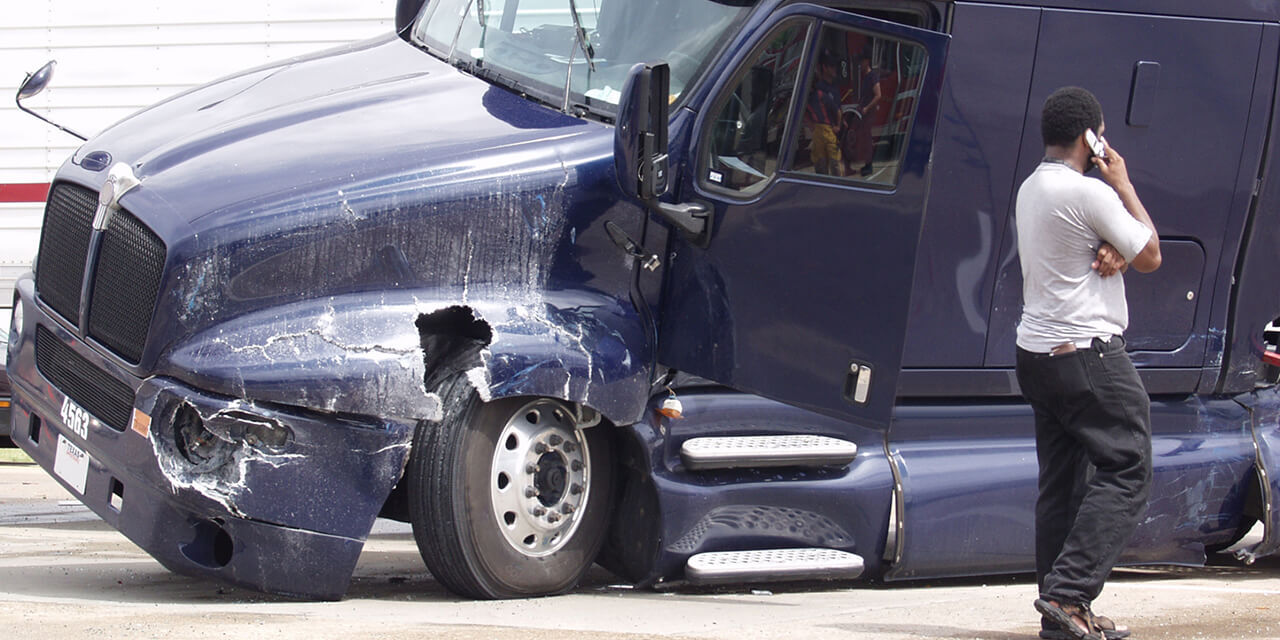Rescue Your Revenue

Protect Your Business After an Accident
Even the most professional truck drivers sometimes get hit on roads and parking lots. Accidents happen because not everyone else on the road is an experienced, careful driver. If another driver damages your equipment, take the right steps to expedite your claim, collect your lost income, and protect your business.
Prove Your Case
You won’t get the other side to agree to pay the first dollar until you’ve proven they’re at fault. Every case has two steps: prove fault and then prove your losses. While the complete list is long, here’s 5 considerations when proving your case.
1. Evidence is Key!
Secure that dash cam footage. Know how to download videos before an accident happens.
Zoom out! Take pictures of everything at the scene, not just your own equipment’s damage. You’ll want pictures of every vehicle’s damage, identifying markings like placards, license plates and DOT numbers, skid marks, items in the road, and any adverse weather conditions. Get the names and contact information for any independent witnesses. If the other side says it’s not their fault, the witness is vital.
2. File the Claim With the Other Side ASAP
Immediately make a claim with the at-fault driver’s insurance or trucking company (if self-insured). Keep written records of all communication. Every time you speak to the adjuster, follow up with an email confirming the conversation. The squeaky wheel does get the grease. Adjusters might have hundreds of files. Make sure yours stays at the top of the pile.
3. Mitigate Losses
Miti..what? Mitigation is a legal term for “make your losses as small as possible”. Even though you’re the victim, you must try to lessen your losses. For example, if your truck can’t be fully repaired right away, make temporary repairs to get back on the road. If it’s not drivable at all, look into rentals until repairs are complete. If you can’t do either thing, keep written proof of your attempts.
If the other side won’t pay for repairs, consider paying for the repairs yourself or filing a claim with your own insurance. Think this through carefully. You don’t want to have your insurance rates go up or get dropped. Ask your insurance agent and motor carrier for their advice.
4. Document Out of Pocket Expenses and Lost Income
Save your receipts! Any costs related to the accident should be sent to the adverse for payment.
Prove your lost loads or lost income. If you don’t have actual proof of lost loads, show them what you typically make on a daily basis and multiply it by the days down.
5. Hire Experts When Necessary
Oftentimes, hiring an expert may be your best bet for recovering your losses. This may be an accountant who understands your books, an independent adjuster who understands insurance companies and repairs, or an attorney that understands negotiation.
As a small business owner, your goal is to get your equipment back on the road and making money. If those wheels aren’t turning, you aren’t earning!
The information provided is for general informational purposes only and does not constitute legal advice.
For more information on this or other legal issues, please contact
The Law Offices of Eckert & Associates, P.A.
DowntimeClaims.com
1-800-DOWNTIME
